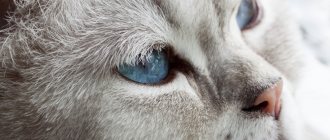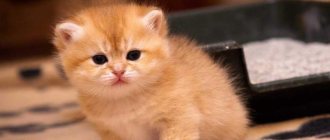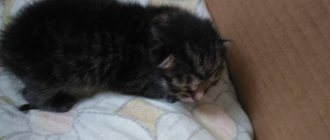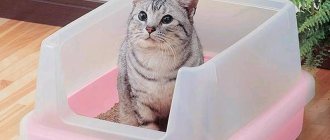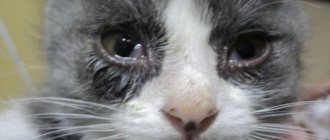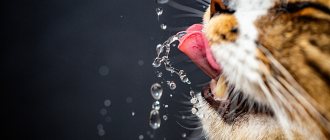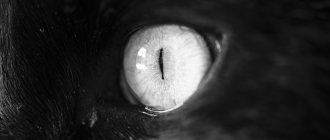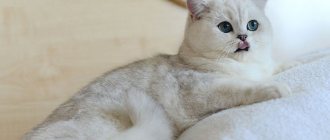If your cat squints one eye, a number of different factors may be to blame. This sign indicates that the kitten has discomfort and pain in the visual organ. The condition when a cat squints and closes its eye can be accompanied by discharge from the organ of vision, as well as suppuration. In such a situation, it is important not to delay a visit to the veterinary clinic.
Causes
It should be noted right away: in most ophthalmological diseases of cats and humans, the pathogens are the same. Therefore, after touching your pet's eyes, you should wash your hands with special care.
Squinting indicates that the animal is experiencing pain or discomfort, which is caused by the following reasons:
- infectious diseases;
- injuries;
- inflammation of the third eyelid;
- glaucoma.
Clinical symptoms, diagnostic methods, treatment and prevention vary depending on the cause. Therefore, each disease is described in a separate section.
Fear
Fear is one of the most powerful reactions, since it is generated by the instinct of self-preservation and is associated with a powerful hormonal release in the body. This feeling makes one literally turn to stone on the spot, and the whole cat’s face turns out to be the personification of the saying: “Rhinestone has big eyes.”
Externally, fear is expressed:
- increased muscle tone;
- stiffness of movements;
- head pulled into shoulders;
- rounded eyes, widely dilated pupils;
- ears down;
- with its tail between its legs (read the article on how to understand a cat by its tail).
A frightened cat is silent or makes abrupt, muffled sounds.
Contagious diseases
Damage to one eye is typical for the following infectious diseases:
- herpes;
- chlamydia;
- demodicosis;
Herpes
Blepharospasm
A viral disease better known as rhinotracheitis. An acute course is typical for unvaccinated kittens from two to three months. Chronic disease occurs in adult animals during periods of weakened immunity. At the initial stage, blepharitis develops, which is characterized by inflammation of the eyelids. They stick together and blepharospasm develops.
Subsequently, the second organ of vision is also affected. A characteristic sign of rhinotracheitis is ulcers on the cornea of the eye. Self-medication is dangerous because it can cause loss of one or both eyes, bronchopneumonia, constipation, and damage to internal organs. Treatment is prescribed by a veterinarian. To prevent rhinotracheitis, kittens and sexual partners are vaccinated before mating.
Chlamydia
The bacterial infection primarily affects kittens from 1 to 3 months. At this time, death is possible. With chlamydia, one eye first becomes inflamed, then the second is affected.
Be sure to read:
Why does a cat shake with small tremors: reasons, what to do, when to contact a veterinarian
Chlamydia affects one eye first
Treatment is prescribed by a veterinarian. If ophthalmic ointments or drops are used, two eyes should be treated, even though one of them looks healthy. Prevention consists of proper feeding, satisfactory living conditions and vaccination with a polyvalent drug against chlamydia and other dangerous diseases of cats.
Demodicosis
Demodicosis glasses
The pathological process is caused by the activation of the subcutaneous mite due to a weakening of the immune defense. With asymmetrical lesions, demodectic glasses are formed around one of the eyes. Soreness causes the pet to squint one eye.
Treatment consists of treating the affected surface with external insecticidal and acaricidal agents. If the pathological process goes far, inflammation occurs.
As the affected area heals, it scars and squinting becomes a lifelong cosmetic defect. Prevention consists of proper feeding, as well as applying insecto-acaricidal drops Spot on to the healthy, intact skin of the withers, which protect the pet from fleas, helminths, cutaneous and subcutaneous ticks.
How to help your pet at home?
In order to provide qualified assistance to your cat, it is necessary, first of all, to know the root cause and accurate diagnosis of the disease. After all, the phenomenon in itself, when a cat squints its eye, is not considered an independent disease; it is only a consequence of hidden pathologies in the animal.
What to do if you can’t immediately visit the veterinarian’s office
- Examine your cat's eye for yourself as it squints. Make sure there are no foreign bodies in it.
- Gently but thoroughly rinse your pet's eyes with a slightly warm saline solution or regular boiled water. Use a sterile gauze swab.
- You need to collect discharge and pus very carefully, moving from the outer corner of the eye to the inner. Do not press on the eyeball under any circumstances, because the animal experiences severe pain and squints its eye to reduce it.
- It is strictly prohibited to use cotton pads during the rinsing procedure to avoid sticking of cotton fibers to the cornea of the diseased eye.
- It is strictly forbidden to use solutions of antiseptics and antibiotics for washing. This can aggravate the pet's condition and cause a burn to the cornea of the eye.
If your pet begins to systematically squint its eyes, you should immediately take the animal to the veterinarian’s office without waiting for complications!
Injuries
Unilateral damage most often occurs in a fight, and also occurs when a cat is stung by a bee. One side swells and the eye closes. A pet injures its eye while chasing prey, or when a splinter gets into the soft tissue or a small solid particle gets into it. Ophthalmic drops are used for treatment.
If the use of an external remedy does not lead to the desired results. Seek veterinary help.
What do tail movements indicate?
Sometimes it seems that the tail lives a life separate from the cat. The animal may be completely motionless or tense, while the tail will write intricate pretzels, swing from side to side, or tensely tap the floor. How to understand a cat’s mood by its tail movements can be determined based on the following observations:
- Calm, neutral mood - the tail is relaxed and lowered or parallel to the ground.
- Friendly mood, joy when the owner appears - the tail rises sharply and remains in the “pipe tail” position.
- Curiosity, interest - when observing potential prey or simply events that are interesting to the cat, a slight twitching of the tip of the tail is observed.
- Playfulness, excitement - sudden movements of the tail from side to side.
- Attention, observation of something - smoother movements of the tail in the horizontal plane.
- Dissatisfaction, irritation - sharp wagging of the tail with a curved tip from side to side.
- Aggression, threat, rage - a vertically raised, fluffy tail.
Inflammation of the third eyelid
The nictitating membrane in an active cat is invisible. The transparent membrane protects the eye sphere from dust particles and debris. Due to the inflammatory process, the membrane hypertrophies and no longer fits under the eyelids.
Most often, unilateral inflammation is observed due to the following reasons:
- infectious diseases;
- allergic reactions;
- injuries;
- internal non-communicable diseases;
- congenital predisposition.
Most often, Persians, Britons, as well as mixed breeds and cats of related breeds get sick. Treatment is surgery. To prevent inflammation of the eyelid, you should purchase a pet from trusted breeders and not engage in spontaneous selection.
Be sure to read:
Otitis in cats: symptoms and treatment, description, treatment with medications and folk remedies
Methods for treating eye diseases in cats
If your cat squints or squints, it needs to be seen by a veterinarian. The specialist will find out the cause of this phenomenon and prescribe treatment.
However, not everyone has the opportunity to immediately take their pet to the clinic. In this case, it is recommended to examine the animal at home and provide first aid.
- check whether a foreign body has entered the eye;
- rinse the damaged visual organ with saline solution or warm boiled water;
- Carefully remove the pus, moving from the outer corner of the eye to the inner.
Without the doctor's permission, it is prohibited to use antiseptic solutions or antibiotics for rinsing and treatment. Medicines, eye drops and ointments are prescribed only by a veterinarian after diagnosis.
Severe cases require surgery and suturing. This treatment is carried out in a hospital setting.
Glaucoma
Glaucoma
Elderly pets suffer from numerous chronic diseases, against the background of which eye pathologies develop. With glaucoma, intraocular pressure increases. The affected organ becomes sensitive to the slightest irritation. The cat develops photophobia: bright light causes the affected eye to squint.
Congenital glaucoma is observed in Persian, Siamese and British kittens. The development of the pathological process can be slowed down if the underlying disease is treated. Full recovery is impossible. Conservative treatment is aimed at relieving pain. If pathological signs increase, surgery is performed. Most often, the damaged organ is removed.
Glaucoma in a kitten
Prevention of congenital diseases involves excluding parents of sick kittens from breeding. Thoroughbred young animals should be purchased from trusted breeders who value their reputation.
Chronic diseases of older animals are prevented by compliance with housing and feeding standards, timely deworming and treatment against external parasites.
Playful mood
Kittens play at any age, stretching their muscles and satisfying the “beast in themselves,” but for growing kittens, games are a way to explore the world.
Sometimes cat fun can be too violent, fueled by the hunting instinct and ending with torn curtains or torn upholstery of a new sofa. Wanting to play, the cat takes a typical pose, which is characterized by:
- gaze focused on potential “prey”;
- forward-pointing ears;
- twitching tail tip;
- moving around the apartment in quick leaps;
- sudden attacks from shelters as an element of “hunting” for a broom, a vacuum cleaner brush or the owner’s feet;
- capturing “prey” with all four paws and teeth.
Body language
Here are some tips on how to understand a cat’s mood by its posture, manner of movement or the position of its flexible, graceful body:
- The pleasure of stroking and caressing is expressed by the arched back.
- Threat, danger, rage, fear - an arched back with raised fur.
- Playful mood, hunting for a toy - the body “spreads” along the floor, legs are half-bent, movements are smooth and graceful.
- The joy of meeting the owner, friendliness - the back is arched, the cat “gets confused” under the feet, trying to attract attention to itself.
- Complete trust - the cat lies on its back, its legs are spread out to the sides, its stomach is not protected by anything.
- Gratitude, pleasure, friendly mood - the cat slightly “butts” the owner with its head or tramples on it with its front paws, slightly releasing its claws.
Each cat has its own, unique character traits and can express emotions in its own ways, different from those described above. The owner's observation and ability to recognize all shades of the animal's mood will help establish emotional contact and achieve complete mutual understanding.

